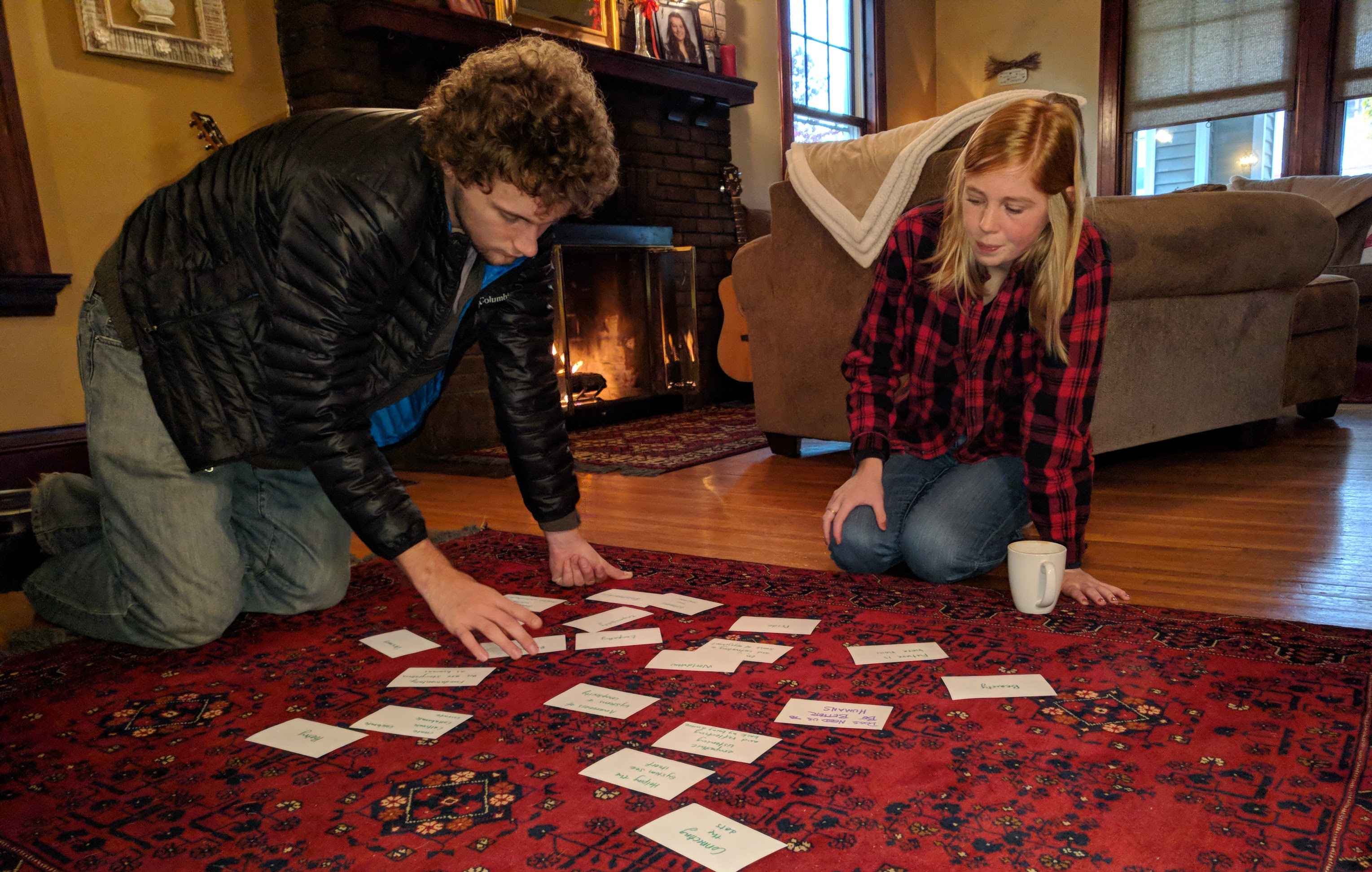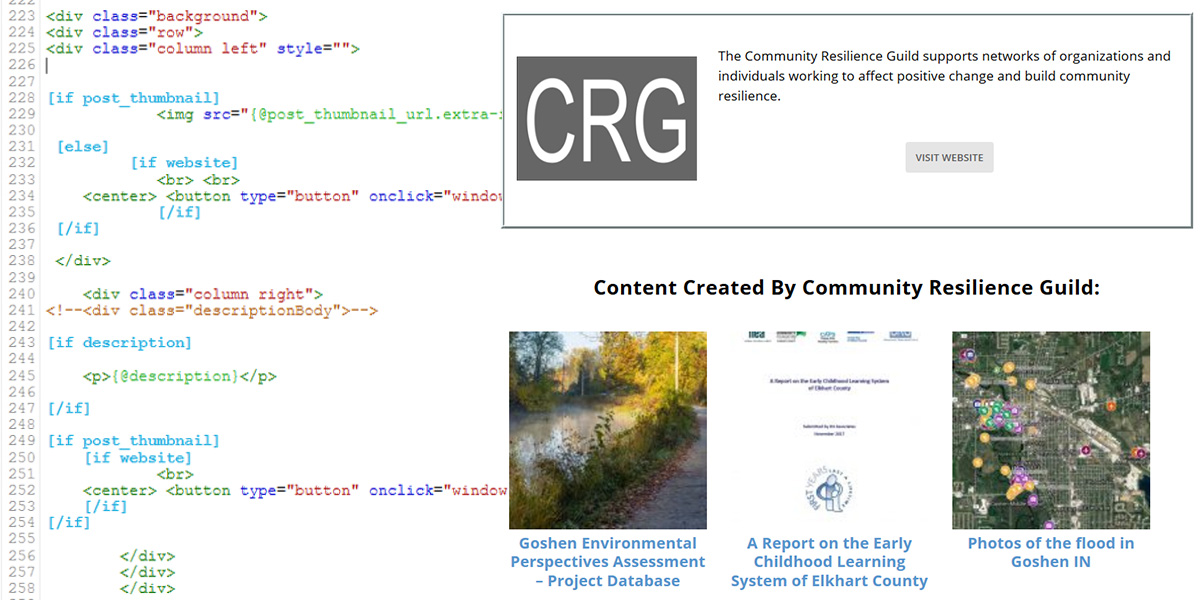
Twila and I mapping out thoughts for the Goshen Guide in late 2017.
In August of 1999, I walked into a classroom for the first time. A full 18 years later, I walked out of the Goshen College gymnasium as a college graduate. Each of the 18 years that I spent in school were neatly divided into three sections: fall semester, spring semester, and summer. One of the realities of being on the semester system, is that nothing lasts very long. From that first day of preschool through my final year at Goshen College, I hardly ever worked on a project for more than three months.
I joined the Community Resilience Guild as a fellow in August of 2017, and I began working on the Goshen Guide in September. I am writing this in June, meaning that I have been working on the Goshen Guide for over eight months — five months longer than just about any project before. In that time I’ve seen the project evolve, change, and grow beyond what I could have ever predicted. Not all of that change has been easy, but it has lead to greener pastures.

A Splitscreen of an HTML template I wrote and the resulting display. Learning HTML and the basics of Web-Development has been a fascinating challenge to tackle.
The school system rarely offers the freedom or time necessary to try new things and change directions mid-project. In school you generally only have one chance on a test, and you only turn in one or maybe two drafts of projects. Once the test is taken or the paper is turned in, the project is done, it’s forgotten, and a new project has taken its place. As a student you’re practically taught to move on and forget about your previous work. There’s no time to experiment, to prototype, or to learn from your mistakes. If the Goshen Guide was “turned in” after it’s first, second, or fifth draft, it would be an unusable mess.
In my creative writing classes in college we were told that “good writing is rewriting.” In the condensed timeline of a semester-long class, that meant 2-3 drafts, but what happens if we have permission to fail and time to learn from our efforts? During my first few weeks at the Resilience Guild, Phil showed me a video called “Austin’s Butterfly.” It’s a powerful example of what we can all accomplish by revising our own work and striving for excellence. I highly recommend this video.
Working on the Goshen Guide has been an adventure. There have been many great moments and breakthroughs, but there have been an equal number of dead ends and headaches. Sometimes you can push through a wall and sometimes it forces you into a new and unexplored direction. It hasn’t been easy. I get frustrated. I get bored. I want things to move quicker. I keep looking for shortcuts that either aren’t there or would undermine future work. But I also recognize that I’ve never before created something as complex or as challenging as the Goshen Guide. This would have been impossible to get right on the first try, but the freedom to take our time, experiment, and adapt is setting is down a path that I believe will lead to a pretty amazing website.
Here’s to the journey.
A video of me talking about the research capabilities of the Goshen Guide. You can find more Goshen Guide videos here.
The Goshen Guide is availbable online at Goshen.Guide
